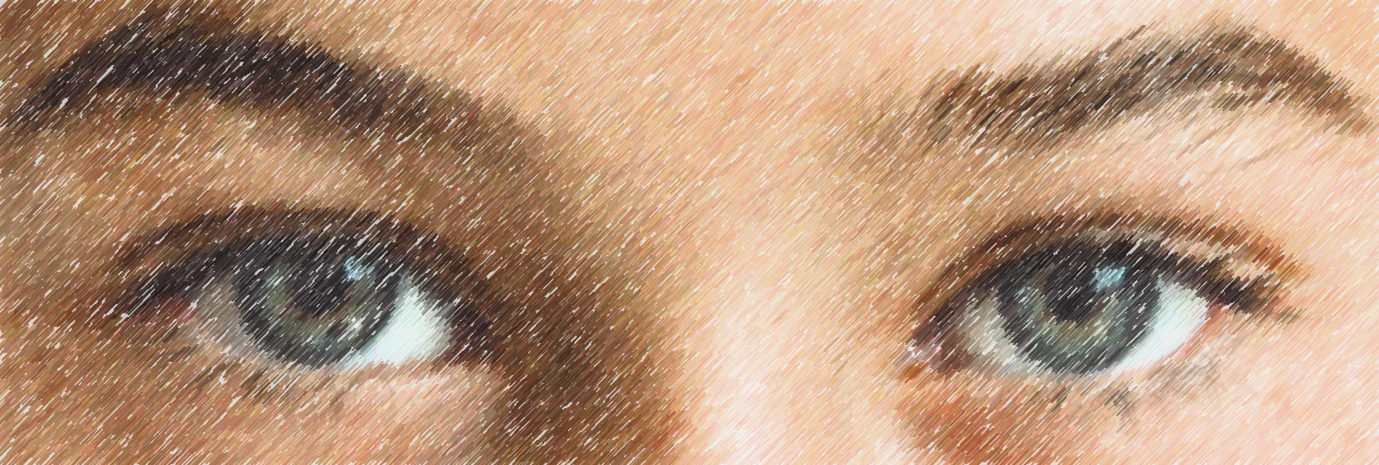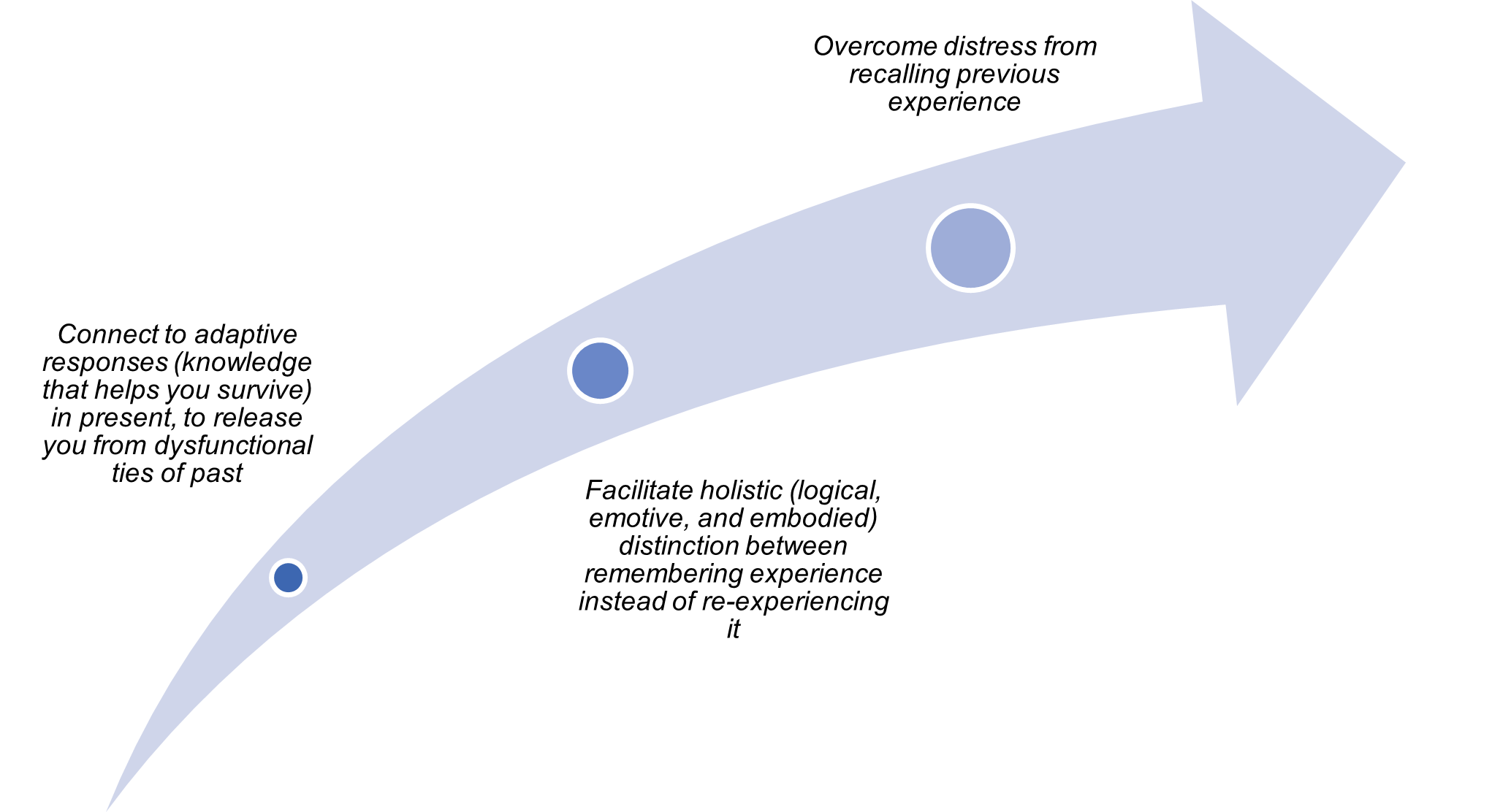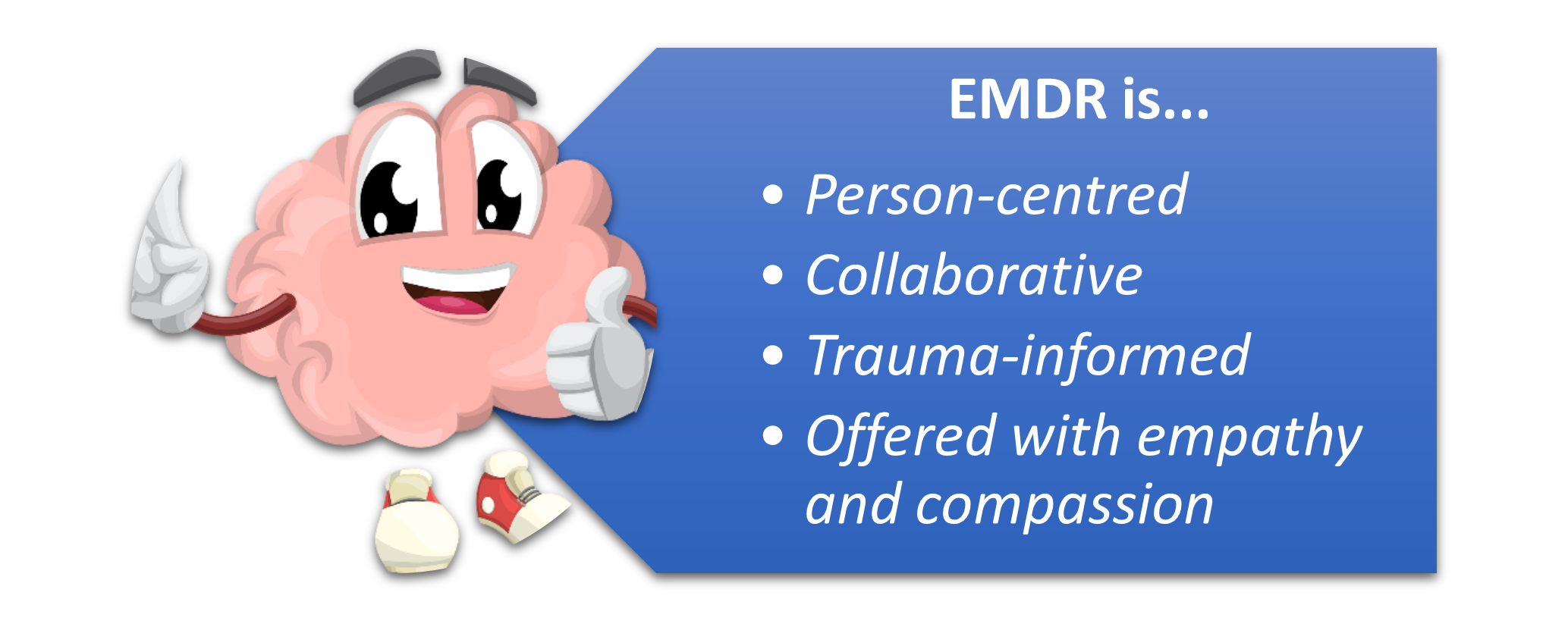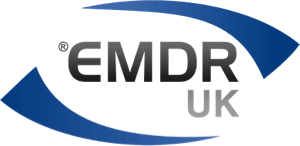What is EMDR?
"Changing the memories that form the way we see ourselves also changes the way we view others…The past affects the present even without our being aware of it" Francine Shapiro.

People often come to therapy looking for answers to help give their lives meaning.
Some of lives biggest questions include: 'what is consciousness?' 'why do we age?' or 'does 'free will' really exist?'
A question I frequently get asked is about Eye Movement Desensitization and Reprocessing (EMDR):
'What is EMDR and how does it work?'
Well-known figures like Prince Harry have spoken about how EMDR helped him resolve childhood trauma. Sandra Bullock, to help support her in the psychological aftermath following a stalker breaking into her house. While Paris Jackson engaged with EMDR therapy to help her cope with the effects of the media/press on her family.
Media coverage of EMDR has grown dramatically in recent years, increasing the number of persons seeking help.
BUT unintentional negative effects might come from pairing EMDR with intimidating terms (such as post-traumatic stress disorder) or celebrity 'endorsements'.
Losing sight of what EMDR actually is runs the risk of creating unrealistic expectations, creating barriers to entry for clients, sensationalising EMDR and portraying it as only suitable for the most severe cases of psychological trauma or as a "miracle" treatment.
The facts are always friendly - so just what is EMDR?
What is EMDR?
EMDR is a client-centred approach to psychotherapy developed in the 1980s by Psychologist, Francine Shapiro.
Like many discoveries - it was made accidentally!
As Francine was walking through a park in the late 1980s, she noticed that her emotional distress linked to a situation she was thinking about suddenly disappeared.
Francine decided to relive the event, and recalled how she had experienced repeated saccadic eye movements spontaneously (quick, simultaneous movements of both eyes in one direction).
Francine began studying eye movements and how they relate to distress, observing that a person's suffering is lessened by utilising bilateral stimulation (see below) when intentionally focusing on an upsetting memory. Also, that eye movements caused the painful experience to become less vivid and less traumatic.
Modern EMDR was born from this discovery (see 'here' for the full history). A systematic method of reducing suffering, in the form of a psychotherapy adhering to principles, protocols, and procedures.
But it wasn't all smooth sailing: EMDR was met with skepticism and debate within the psychological community.
The absence of research evidence at the time (current research evidence for EMDR therapy can be found 'here') made EMDR seem like a novel method to addressing traumatic memories.
And seriously! what's with the finger-wagging?
As with any field, if something does not fit into the current understanding of how things work, it raises eyebrows, hackles or both
EMDR is multidimensional, working on different levels while different things happen simultaneously.
Some incorrectly claim eye movements and finger-wagging 'is EMDR'. And that EMDR is a 'simple technique' when they observe nothing but that.
But the finger-wagging is only part of EMDR.
EMDR is a structured process consisting of 8 phases of treatment. Each step focuses on a different aspect of trauma, allowing you to move through trauma systematically
EMDR targets past experiences, current triggers, and potential future challenges. The result aims to alleviate current symptoms, decrease or eliminate distress linked to the disturbing memory, enhance self-perception, relieve bodily sensations and resolve past, present, and future anticipated triggers.
Each person and their therapy goals are unique, but generally, the goals of EMDR therapy are:

Trauma and memory
Disturbing memories and experiences, according to the EMDR theory, are at the root of both pathology (the cause and effect) and mental health. Not that a mental health issue means that you're broken or that there is something fundamentally wrong with you (organic deficit).
The question in EMDR is always 'what happened to you?' And never 'what’s wrong with you?'
Memories are windows from the present into your past, guiding you to the future.
Think of memory as a 'tool' to understand experiences and prevent the horrors of the past from repeating themselves.
The language of memories is spoken through the lessons you've learned and how they influence your present.
In its most basic form (and to oversimplify), psychological trauma often results from a loss of connection to one's identity and their worldview: the event that's happened to you makes it too painful to stay in touch with your feelings in the same way you did before.
When you are involved in a traumatic event, your brain may not be able to make sense of the event entirely. It cannot 'store it' properly like it would a non-traumatic memory (incomplete information processing).
This results in the memory getting 'stuck' in the brain with the original picture, sound, thoughts, feelings and body sensations.
As a result, your natural ability to heal may be impeded by the improperly stored memory, which generates an imbalance in the nervous system that 'blocks' your natural ability to heal.
So, when you try to recall the event, you experience the thoughts, emotions, physical sensations, beliefs, and senses related to the memory very vividly and intensely. Like the event is happening to you again.
How does EMDR work?
EMDR aims to safely engage how trauma and associated traumatic memories are stored in the brain, and change how information is stored and processed (non-associative learning).
One of the significant differences between EMDR and other therapies is that EMDR isn't a talk therapy.
Oh we absolutely talk! by 'not a talk therapy' I mean the healing does not come from talking about your issues.
People who have been traumatised often feel relief since they don't have to revisit every aspect of the memory or disclose the specifics in great detail.
Minimal key details are required to help reprocess, but you control how much/little you share concerning the trauma.

EMDR acts like a catalyst: freeing your brain's natural healing capabilities and allowing them to do their job. Resulting in you processing the memory and reconnecting with your authentic self.
(‘Process' meaning your brain finds information from the past needed to help you survive in the present. Sometimes referred to as 'adaptive resolution').
After processing the memory, you are less sensitive to the powerful emotional impacts that came from recalling the experience before. So that you can think about the event without the same intense feelings.
Research into the specific mechanisms underlying EMDR is still in its infancy.
Bilateral Stimulation

EMDR activates memories and pairs them with bilateral stimulation: a form of stimulating the brain using visual (eye movements), auditory or sensory stimulation (e.g., tactile stimulation) in a left-right pattern that crosses the body in a steady rhythm.
The rhythmic left-right stimulation helps activate both sides of the brain to access, understand and process information that has been supressed in the same way it would process an ‘ordinary’ memory.
When done correctly, bilateral stimulation can help your brain heal by modifying and adapting to experience (neuroplasticity).
That’s why the finger wagging and eye movements!
Research has hypothesised bilateral stimulation to be comparable to what happens naturally during REM (Rapid Eye Movement) sleep, where your eyes move rapidly from side to side due to increased brain activity.
If you have additional support needs, visual impairments or are deaf, the varied methods of bilateral stimulation (e.g., audio tones or butterfly hug) can help make EMDR more accessible to you.
What happens in an EMDR session?
The most important thing is to build a relationship of mutual trust and therapeutic rapport.
Like most therapy sessions, the first meeting is an assessment where I would take time to understand what has brought you to therapy.
A detailed assessment lets us both determine if EMDR is a good fit for you. I try to make this feel like a natural conversation.
Emotional, psychological, and physical issues all have a role in a person's presentation. At the same time, we explore significant life events that might serve as 'targets' for processing.
After that, we'll go over the EMDR model and address any questions you might have about it.
In the next step, we'd spend some time getting you ready for "processing," which may include psychoeducation, relaxation methods, guided visualisation, and grounding strategies.
When ready to process, we'll follow a precise protocol to activate a memory before applying bilateral stimulation (eye movements, tapping, tactile or audio tones).
During this process, I would closely observe your responses and check in with your experience—interweaving responses to re-route through the trauma.
Traumatic memories may feel overwhelming, but the preperation we've done beforehand keeps you safe and aware of your reactions.
We aim for the intensity to diminish as we progress through the 8 phase protocol.
By the end of the session, we will check in with each other about the experience, new insights gained and ensure you are in a calm, safe place before ending the session.
(Note: each session is unique and responsive to what you need at that time)
Who is EMDR appropriate for?
EMDR is suitable for adults and children and can help with a range of difficulties including (but not limited to):
Abuse, anxiety, chronic pain, depression, OCD, personality disorders, phobias, PTSD, sexual abuse, suicidal thoughts/feelings, service men and women.
While EMDR has a reputation for being used to support PTSD, it is a very personalised, collaborative and kind way of supporting someone, especially following difficult life events.
Can EMDR be done online?
Yes.
Online EMDR therapy works similarly to face-to-face in terms of processing memories, research suggests it is just as effective as face-to-face.
For those curious about what an online EMDR session looks like, esteemed practitioners Mark Brayne and Dr. Jamie Marich have put together a demonstration video of an 'Online EMDR Session.'
'EMDR is done with people, not to them'

There is much debate around the 'best' forms of therapy in the mental health community.
But I feel that question is redundant and results in circular discussions that almost always lead to the same conclusion: different people need different things at different times.
There is no 'best' therapy; what someone feels is the best therapy for them is not a clinical decision but a personal one.
EMDR is not perfect or a one-size-fits-all solution, nor does it claim to be: there is no treatment for life.
But EMDR gives you the chance to see with your own eyes and answer with your own heart.
As a spiritual journey, psychotherapy is a means of establishing a foundation for long-term knowledge and authentic expression of the self.
And if you only look for what you know, that’s all you’ll see.
Sometimes the expression of self needs mechanisms, models, and techniques to heal—other times, meaningful relationships.
I feel a Therapist becomes blinded when closed-mindedly focusing on tools, techniques, and what is the ‘best’ therapy, at the expense of relating with the needs of their client.
Generally, people tell you what they need if you're prepared to actively listen and respond with empathy and compassion.
To quote my trainer, Dr. Michael Paterson: 'EMDR is done with people, not to them'.
What remains most important to me is putting clients' needs first and offering as much of myself as possible to help them overcome their issues.
Use whatever terms you want to describe it, and present it however you want, but therapy is a meaningful exchange about life.
And what is meaningful takes many different forms.
For more information about EMDR therapy, visit EMDR Association UK.

Getting started
To arrange an appointment, you can email me at andrew.kidd@firstpsychology.co.uk or contact the First Psychology Services Team on 0141 404 5411.
